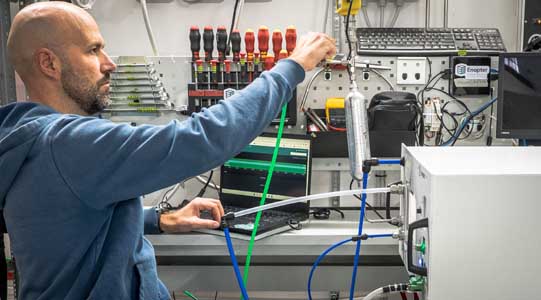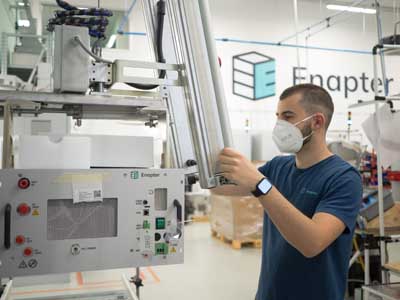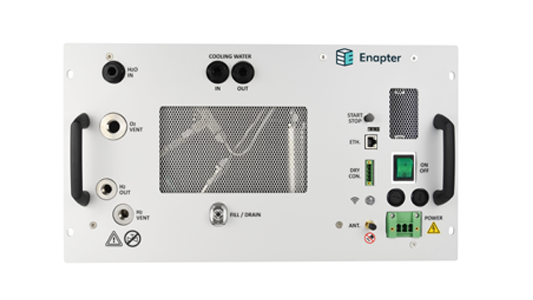Enapter AG has started production of the water-cooled variant of its AEM Electrolyser EL 4.0, expanding its product range with a new standardised device. The AEM Electrolyser EL 4.0 Liquid-Cooled (LC) enables the direct connection of an external cooling system to optimise thermal management and make efficient use of waste heat.

The unit is particularly suitable for producing green hydrogen at locations and operating sites where, due to external conditions, sufficient cooling by means such as exhaust air systems is not possible – and in systems where customers wish to use the waste heat produced more efficiently.
The heat is released via a secondary circuit and can be combined with a heat pump. A common cooling circuit with other components such as water-cooled fuel cells is also possible.

Due to the external water cooling, this electrolyser offers the best conditions for installations in smaller rooms and containers. Moreover, the dissipation of heat through external pipes proves particularly effective when combining several EL 4.0 LC units in a cluster. Thus, at different coolant inlet temperatures, between 600 W and 900 W of heat (with an increasing trend from the beginning to the end of life) can be extracted from each unit and made available for external applications.
With the new water-cooled AEM Electrolyser EL 4.0, the company stays true to its successful modular approach. Like the air-cooled variant already in production, the EL 4.0 LC is also easy to integrate and simple to scale for systems of different sizes depending on the application requirements. The combination with an external cooling circuit also increases the degree of flexibility on the user side and makes it possible to create an individual setup that can be perfectly matched to the needs of demanding customer groups.
The AEM Electrolyser EL 4.0 LC is offered in both AC and DC versions. The current delivery times for the EL 4.0 range from 2 to 12 weeks on average, depending on the order size. Enapter has already received the first orders for the new variant.













